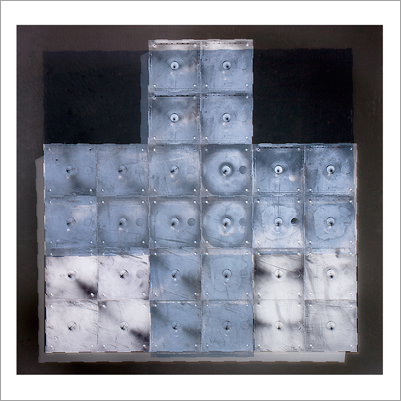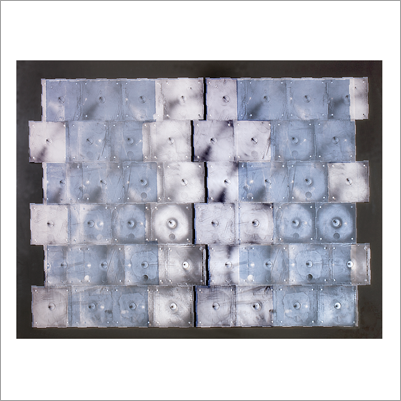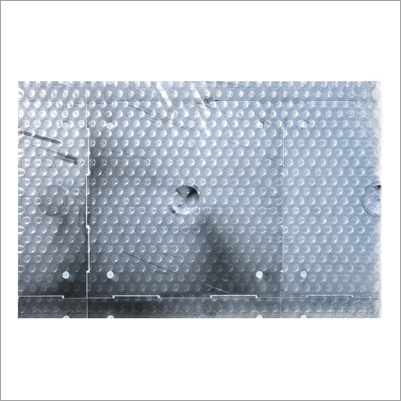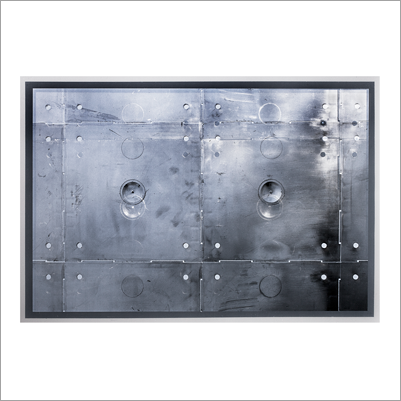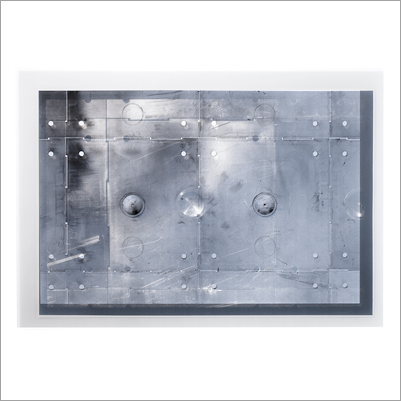Paul Caffell’s artwork, especially his painting, has long been characterised by its association to the avant-garde music of the 1950s and ’60s. This was as true of his early canvases - in their fragmentation and play between mechanical and biomorphic forms affected by electro-orchestral compositions such as Roberto Gerhard’s Collages - as of more recent works influenced by, and responding to, composers like Morton Feldman or Giacinto Scelsi. If those paintings also had a modernist reference to the processes of composition in their very materiality – for example in the gestural traces of the palette knife – Caffell’s recent sculptural photographs, his ‘envelopes’, made explicit a characteristically modernist rhetoric concerned with the means of its own articulation. Caffell took as his subject matter the disposable wrappings of photographic materials and played between the insubstantiality of the photographic print and the tangible properties of the sculptural object, with the hands-on quality of the platinum-palladium printing method as articulating device.
Caffell’s new photographs in the ‘Continuum’ series might be said to retain that concern with the means of production, and to sustain the play between the three-dimensional and the planar – even to accentuate it in the mode of the prints’ exhibition. However, what is most singular about them is their radical experiment in combining the musicality that was once limited to the paintings with the self-referentiality of the ‘envelope’ photographs. That the chosen object of photographic address - now the CD case of the digital age rather than the paper wrappers of chemical-mechanical processing - seemingly composes itself, almost by default, as a grid further accentuates the modernist credentials of the project.
In the paintings, Caffell’s embodied response to the music that concerned him allowed for a parallel to be established between visual symbolism and the musical form. Thus, the long, slow-developing repeats found in Feldman’s compositions, whose incremental changes and patterns only slowly become apparent to the listener, might find an echo in the near-monochromatic canvas with its gradually evolving textures and ‘slow’ disclosures of vivid colour. By contrast, the scale, and industrial production, of the chosen object for ‘Continuum’ produces by necessity both shorter intervals and more rapidly developed, sustained repetitions. Let us maintain the musical comparison, and suggest an equivalence between Caffell’s artworks and the musical score – a convergence characteristic of late-modernism. What we have in the difference and repetition of the ‘Continuum’ images is something akin to the insistent repetitions, with what are, initially, almost imperceptible introductions of difference – for example, the substitution of a beat for a rest – that characterise the “minimalist” composers of the late 1960s and beyond. We are, then, visually, working with something akin to the compositional rhetoric of Philip Glass, Steve Reich, James Tenney and Terry Riley, rather than with Feldman. This is not, perhaps, as surprising an affinity to discover for Caffell – for if there was no obvious relation to such musical forms in the paintings, waiting to be further explored photographically, there was in all those paintings a profound concern with process. The label “minimalist” was always a misnomer applied by critics who perhaps did not have the differentiating taxonomy available to fine-art. Glass and Reich’s affinities, their interest in difference and repetition, allied them firmly with the post-minimalist artists of their time – sculptors such as Richard Serra, Eva Hesse and Robert Morris, video artists such as Bruce Nauman, and as Jonathan Bernard pointed out, painters such as Sean Scully, Robert Ryman and Agnes Martin. 1. The central concern of all those artists, regardless of medium, was with process and change, and the degree to which the composers shared it was manifest from the start in the seminal ‘Materials-Procedures’ show of 1967 in which they all participated. With ‘Continuum’, Caffell transfered to photography some of those thematic propensities that once were confined to his painting – and these are concerned with material and procedure.
Professor Chris Townsend
1. Jonathan W. Bernard, ‘The Minimalist Aesthetic in the Plastic Arts and Music’, Perspectives of New Music, 31, no. 1, (winter 1993), pp. 86-132.

